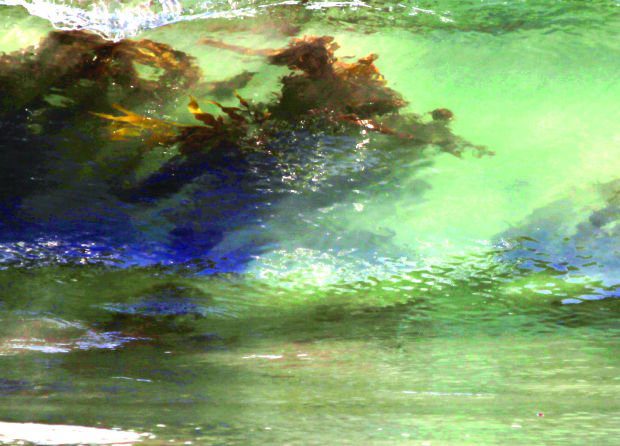
In California, kelp is at once admired for its underwater beauty, grumbled over as a beach obstacle and served up on dinner plates. Now it is being used in the name of science.
Researchers will visit Malibu next month to test local kelp as part of a West Coast-wide effort to determine the levels of residual radiation released in 2011 when tsunamis damaged the Fukushima nuclear power plant in Japan.
“Whatever is in the sea water will be magnified in the kelp,” says Steven Manley, a biology professor at Cal State Long Beach.
A research team led by UCLA ecologist Peggy Fong will take 15-lb. samples at locations off Escondido Beach and a second site near County Line Beach sometime between Feb. 24 and March 5. More than 20 labs and universities will take place in a West Coast-wide effort called Kelp Watch 2014, testing 35 sites from Alaska to Baja.
Found up and down the coast, these canopy-forming kelps act like sponges and absorb most of what is in the water. The kelp serves essentially as a natural dosimeter, which means it measures an absorbed dose of radiation.
Earlier this month, government officials said trace elements of radiation from the Fukushima disaster did not endanger California beachgoers.
“There is no public health risk at California beaches due to radioactivity related to events at Fukushima,” the California Department of Public Health said in a statement.
One of the main reasons for the study is to “let the public know what’s there,” Manley said.
Manley says that he’s “pretty sure” researchers will find radiation in the kelp samples; however, he anticipates a very low amount because the radiation most likely has been diluted.
The kelp will be dried out, ground down and inspected for radiation by scientists from the Lawrence Berkeley National Laborator y at Californ i a Berkeley.
This series of tests is the first of three efforts planned this year by scientists to monitor radiation levels on the West Coast. Results from the research are expected to be available on a website by March.
On March 11, 2011, a magnitude 9.0 earthquake struck off the coast of Japan, resulting in casualties of around 20,000 and decimating properties. It also triggered a series of tsunamis that damaged the Fukushima Daiici power plant and sent radiation leaks into the ocean. Studies show that radionuclides from the plant continue to leak into the sea, according to the Los Angeles Times, but experts say the radiation quickly dilutes in the water.
Professor Manley has been getting calls from various surfers and beach goers asking if it’s safe to swim and surf.
Last week, visitors to Malibu beaches indicated they were also keen to find out what the research yields.
“I’m really interested to see what this research finds,” one local said.
One surfer said he was aware of the radiation reports, but would not let it affect his time in the ocean.
“This is not a good development but we will still go strong as surfers,” he said.